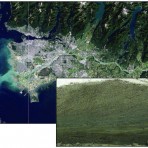What petroleum geologists can learn in Vancouver: Lessons from the Fraser River, B.C.
What petroleum geologists can learn in Vancouver: Lessons from the Fraser River, B.C.
Categories: General, Lectures and Seminars, Receptions, Lunches and Dinners | Intended for Anyone

3120 Herzberg Laboratories
1125 Colonel By Dr, Ottawa, ON
Contact Information
Sarah Adams, (613) 520-5633, sarah.adamsaston@carleton.ca
Registration
No registration required.
Cost
Free
About this Event
Host Organization: Department of Earth Sciences
More Information: Please click here for additional details.
The economic success of steam-assisted gravity drainage (SAGD) is largely dependent upon the geometries of mud beds and muddy bedsets in bitumen-saturated sandstone reservoirs. Inclined mud beds that are interbedded with sand act to block steam flow through the reservoir, resulting in bypassed pay and poor hydrocarbon recoveries. To better understand how mud beds are distributed in reservoirs, modern analogs must be studied. The Fraser River, B.C., is a case in point. Depositional trends defined from the Fraser augment our understanding of mud-bed distributions, and provide a means to predict reservoir architecture based on sediment characteristics.
In the lower reaches of the Fraser River, inclined interbeds of sand and mud (inclined heterolithic stratification or IHS) are developed on bars across the tidal-fluvial transition. In terms of IHS characteristics, the tidal-fluvial transition can be grouped into three distinctive regions: 1) tidal backwater (freshwater only); 2) tide-influenced, fluvially dominated (brackish water); and, 3) subequal tidal-fluvial (brackish water). 1) In the tidal backwater, mud deposition is limited, and IHS is only developed in side channels and on counter point bars. Burrowing in this zone is very rare, and the traces tend to be small, simple structures. 2) Where saltwater and freshwater mix, mud deposition is at its highest. From landward to seaward across the zone of fresh- and saltwater mixing, decreasing fluvial influence is manifest by an increase in mud volume and heterolithic deposition, with a concomitant increase in the diversity, size, and density of burrows. 3) Bedding rhythmicity increases seaward through the zone of subequal tidal and fluvial flow, and only decreases onto the lower delta-plain tidal flats. Burrows in zone 3 are larger and the trace assemblage is more diverse than elsewhere along the tidal-fluvial transition.
The relative proportion of tidal versus fluvial flow in the Fraser River determines the character of IHS developed on channel bars. Conversely, the sedimentology and ichnology of IHS in the rock record can be used to predict the dominant depositional processes that controlled deposition. With additional research on modern analogs, it should be possible to predict the geometries of muddy bedsets in IHS-based sedimentary architectures, and from these data, optimize the efficient extraction of bitumen from heterolithic reservoirs.